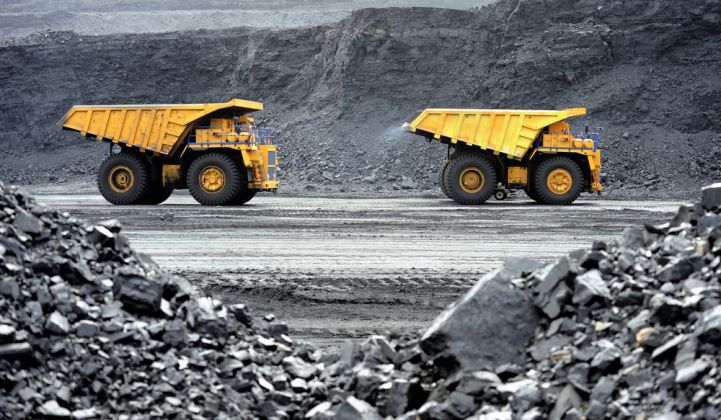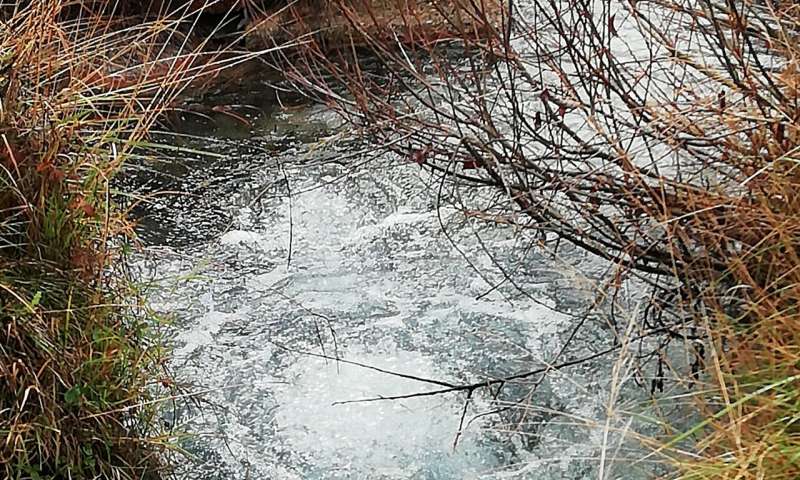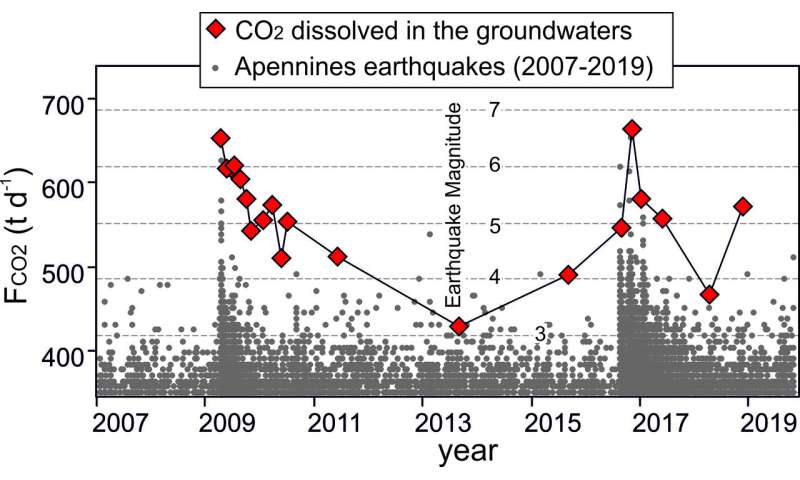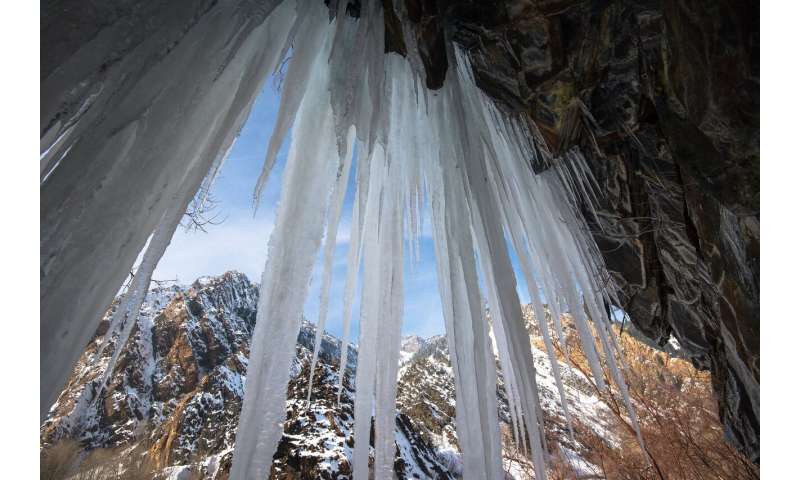As the effort to phase out coal by 2038 begins, the question of whether the market would have done the job sooner lingers.
JOHN PARNELL AUGUST 27, 2020

Germany's coal phaseout plan awaits approval from the European Commission.
The best compromises tend to leave all parties equally dissatisfied. By that measure, the German coal phaseout looks like a great compromise.
The first tender to pay German coal power plants to close will begin next week, and no one is entirely happy. Environmental groups say the closures will come too late to align with the goals of the Paris Agreement. Utilities have asked for swift compensation payouts, but the European Commission has yet to give the program its seal of approval. Even with compensation, utility RWE thinks it will face a €900 million ($1.06 billion) loss from the deal.
In 2018, Germany appointed a commission drawn from industry, government and civil society to find a broadly acceptable way to close the nation’s substantial coal mining and power plant infrastructure. Despite its long-time leadership in wind and solar energy, Germany still had 44 gigawatts of coal plants running at the end of 2019, and parts of the country remain economically reliant on coal.
The final coal deal, approved by Germany's parliament last month, will see all of the country's capacity closed by 2038, with more than half of it shut down by 2030. For €40 billion of compensation to actually start flowing, the European Commission must grant State Aid approval — what essentially amounts to an endorsement that the government is not distorting the market with its payments.
In recent earning calls, RWE, one of the major recipients of compensation, said the European Commission's final approval is not expected until the autumn. Germany is rolling ahead anyway, working under the assumption that Brussels will eventually sign off on the plan.
Coal phaseout process set to begin
The process will compensate shuttering lignite, or "brown coal," plants, which are the most heavily polluting, via a flat rate. RWE and Leag are the only operators with more than 1 gigawatt of affected capacity. RWE is set to receive €2.6 billion; Leag will receive €1.75 billion.
Hard coal plants, or those burning more carbon-dense and less-polluting types of coal, by contrast, will be closed via least-cost tenders. These will be held sporadically through 2024.
There are also compensation packages for workers in mines and power plants who lose their job as a result of the coal exit laws. Those payments will last till 2048 and are estimated at €5 billion.
On September 1, hard-coal plant operators can bid into the first tender for the early closure of 4 gigawatts of generation capacity. The maximum payment per megawatt of capacity shutdown is €165,000 ($196,000) for this initial tender. That price ceiling gradually falls over time, with the final auction capped at €89,000 per megawatt.
So far, the most intense controversy has centered on the flat-rate compensation for the lignite plants, which was calculated behind closed doors. Environmental legal organization ClientEarth has tried, so far in vain, to have these calculations made public. ClientEarth also alleges that the Leag payments are contrary to the EU electricity market regulations.
Maximilian Boemke, a partner at the German office of law firm Watson Farley & Williams, thinks that the calculation of the flat-rate lignite compensation will be key to the European Commission’s decision.
“The EU Commission will have to review if the calculation method, as well as the assumptions, are plausible. We cannot exclude [the possibility] that it might reject the flat-rate calculation in view of the volatility of the energy markets and the costs of CO2 certificates,” Boemke told GTM by email.
Essentially, the argument boils down to whether the new market reality means those plants would have been squeezed out anyway. The merit order system — the method by which European and many other grid operators and energy markets choose the lowest-operating-cost resources to be brought online before more expensive alternatives — means that this is a question of whether natural-gas prices will keep gas-fired plants competitive with coal during its sunset years.
The debate over coal plants' future market prospects
In other words, a €40 billion policy's future at least partly relies on accurate natural-gas forecasting 18 years into the future. There are reasons to doubt that lignite plants being offered the current flat-rate payments to shut down early could remain competitive in the market long enough to earn their equivalent if they were to remain open.
“The lignite plants in the first and second stage of the phaseout will be approaching 50, and in some cases, 60 years of operation when they close,” said Dan Eager, principal analyst for European power at Wood Mackenzie Power & Renewables. “It could be argued...that many of these assets [would] have been decommissioned around this time anyway or risk falling to pieces.”
That’s not a universal story, he pointed out. The youngest plant, Datteln 4, is both flexible and cost-competitive, and it could serve as a useful counterweight to a renewable-heavy grid, carbon emissions aside.
State Aid approval of a previously completed round of German coal closures, which paid lignite plants to go on standby, was approved in 2016. The 2016 mechanism also left the level of compensation up to the energy regulator, but it was set using a formula, rather than a flat rate. This State Aid approval, and another for a €52.5 million payment to Vattenfall for the closure of the Hemweg 8 plant in the Netherlands, suggests the German plan is likely to be approved as well.
But aside from the flat-rate compensation structure, there is another key difference between those approved plans and Germany’s phaseout: Those shutdowns happened in the near term, not over the course of 18 years.
Boemke pointed out that it is a reasonable assumption that the plant closures involved in the 2016 measures were missing out on money-earning years of operations by going on standby or shutting down entirely “According to some studies, this seems less certain for the plants in question today,” he said. “Germany will have to provide evidence to the EU Commission that the plants would not have closed [due to market pressures] before 2030.”
Broadly speaking, however, coal's market prospects are not great.
“Growth in low-short-run-cost renewables, expectations of sustained low gas prices for the next few years, and increasing carbon prices are putting tremendous pressure on the margins of coal-fired assets across Europe," said Wood Mackenzie's Eager. "Our data shows that German coal generation was down 26 percent in 2019 relative to the previous year, with gas generation up 10 percent and renewables up 14 percent. We can expect further reductions once the 2020 results are in."
In many parts of Europe, coal is already on the ropes. A recent report by the think tank Ember estimated that coal power plant utilization rates in the European Union have dropped to 24 percent.
France and the U.K. have both brought forward their own coal phaseouts by a year to 2022 and 2024, respectively. In the U.K., the market has more or less phased out coal this year. It contributed 3 percent of U.K. power in Q1 2020 compared to 39 percent in Q1 2000.
Given what's happening elsewhere in Western Europe, then, critics argue the German phaseout plan locks it into an artificially drawn-out shutdown process.
“Our analysis suggests that the German coal law, and the contracts with operators that it relies on, actually maintains a situation that no longer reflects economic reality. Worse still, it is set to make climate action even more difficult in the future,” said Ida Westphal, an energy lawyer at ClientEarth's Berlin office, in an email.
What if the State Aid approval isn’t granted?
If the State Aid approval is rejected by the EU Commission, an already-lengthy process will be stretched out further. An initial rejection would trigger a month-long public consultation and a fresh round of talks with the authorities.
“The German government and the coal industry could, of course, try to challenge a negative decision by the commission...[in] the EU courts, but that is lengthy, costly and the aid could still not be paid in the meantime — so amending the law could be quicker and more effective,” Westphal said, adding that a challenge in the courts could run in parallel.
With so much work already done to develop the existing coal phaseout laws, anything that jeopardizes it will likely be unpalatable to the government. Utilities might, for example, try to negotiate higher payouts if consideration of the law is reopened.
More likely is that the existing agreement, should it be found deficient by the EC, will be amended until it can be approved.
“Given the long discussions about the phaseout and the [difficulty] of finding a compromise, I do not think that the phaseout plan will be touched again,” said Christine Bader of Watson Farley & Williams.
Coal phaseout process set to begin
The process will compensate shuttering lignite, or "brown coal," plants, which are the most heavily polluting, via a flat rate. RWE and Leag are the only operators with more than 1 gigawatt of affected capacity. RWE is set to receive €2.6 billion; Leag will receive €1.75 billion.
Hard coal plants, or those burning more carbon-dense and less-polluting types of coal, by contrast, will be closed via least-cost tenders. These will be held sporadically through 2024.
There are also compensation packages for workers in mines and power plants who lose their job as a result of the coal exit laws. Those payments will last till 2048 and are estimated at €5 billion.
On September 1, hard-coal plant operators can bid into the first tender for the early closure of 4 gigawatts of generation capacity. The maximum payment per megawatt of capacity shutdown is €165,000 ($196,000) for this initial tender. That price ceiling gradually falls over time, with the final auction capped at €89,000 per megawatt.
So far, the most intense controversy has centered on the flat-rate compensation for the lignite plants, which was calculated behind closed doors. Environmental legal organization ClientEarth has tried, so far in vain, to have these calculations made public. ClientEarth also alleges that the Leag payments are contrary to the EU electricity market regulations.
Maximilian Boemke, a partner at the German office of law firm Watson Farley & Williams, thinks that the calculation of the flat-rate lignite compensation will be key to the European Commission’s decision.
“The EU Commission will have to review if the calculation method, as well as the assumptions, are plausible. We cannot exclude [the possibility] that it might reject the flat-rate calculation in view of the volatility of the energy markets and the costs of CO2 certificates,” Boemke told GTM by email.
Essentially, the argument boils down to whether the new market reality means those plants would have been squeezed out anyway. The merit order system — the method by which European and many other grid operators and energy markets choose the lowest-operating-cost resources to be brought online before more expensive alternatives — means that this is a question of whether natural-gas prices will keep gas-fired plants competitive with coal during its sunset years.
The debate over coal plants' future market prospects
In other words, a €40 billion policy's future at least partly relies on accurate natural-gas forecasting 18 years into the future. There are reasons to doubt that lignite plants being offered the current flat-rate payments to shut down early could remain competitive in the market long enough to earn their equivalent if they were to remain open.
“The lignite plants in the first and second stage of the phaseout will be approaching 50, and in some cases, 60 years of operation when they close,” said Dan Eager, principal analyst for European power at Wood Mackenzie Power & Renewables. “It could be argued...that many of these assets [would] have been decommissioned around this time anyway or risk falling to pieces.”
That’s not a universal story, he pointed out. The youngest plant, Datteln 4, is both flexible and cost-competitive, and it could serve as a useful counterweight to a renewable-heavy grid, carbon emissions aside.
State Aid approval of a previously completed round of German coal closures, which paid lignite plants to go on standby, was approved in 2016. The 2016 mechanism also left the level of compensation up to the energy regulator, but it was set using a formula, rather than a flat rate. This State Aid approval, and another for a €52.5 million payment to Vattenfall for the closure of the Hemweg 8 plant in the Netherlands, suggests the German plan is likely to be approved as well.
But aside from the flat-rate compensation structure, there is another key difference between those approved plans and Germany’s phaseout: Those shutdowns happened in the near term, not over the course of 18 years.
Boemke pointed out that it is a reasonable assumption that the plant closures involved in the 2016 measures were missing out on money-earning years of operations by going on standby or shutting down entirely “According to some studies, this seems less certain for the plants in question today,” he said. “Germany will have to provide evidence to the EU Commission that the plants would not have closed [due to market pressures] before 2030.”
Broadly speaking, however, coal's market prospects are not great.
“Growth in low-short-run-cost renewables, expectations of sustained low gas prices for the next few years, and increasing carbon prices are putting tremendous pressure on the margins of coal-fired assets across Europe," said Wood Mackenzie's Eager. "Our data shows that German coal generation was down 26 percent in 2019 relative to the previous year, with gas generation up 10 percent and renewables up 14 percent. We can expect further reductions once the 2020 results are in."
In many parts of Europe, coal is already on the ropes. A recent report by the think tank Ember estimated that coal power plant utilization rates in the European Union have dropped to 24 percent.
France and the U.K. have both brought forward their own coal phaseouts by a year to 2022 and 2024, respectively. In the U.K., the market has more or less phased out coal this year. It contributed 3 percent of U.K. power in Q1 2020 compared to 39 percent in Q1 2000.
Given what's happening elsewhere in Western Europe, then, critics argue the German phaseout plan locks it into an artificially drawn-out shutdown process.
“Our analysis suggests that the German coal law, and the contracts with operators that it relies on, actually maintains a situation that no longer reflects economic reality. Worse still, it is set to make climate action even more difficult in the future,” said Ida Westphal, an energy lawyer at ClientEarth's Berlin office, in an email.
What if the State Aid approval isn’t granted?
If the State Aid approval is rejected by the EU Commission, an already-lengthy process will be stretched out further. An initial rejection would trigger a month-long public consultation and a fresh round of talks with the authorities.
“The German government and the coal industry could, of course, try to challenge a negative decision by the commission...[in] the EU courts, but that is lengthy, costly and the aid could still not be paid in the meantime — so amending the law could be quicker and more effective,” Westphal said, adding that a challenge in the courts could run in parallel.
With so much work already done to develop the existing coal phaseout laws, anything that jeopardizes it will likely be unpalatable to the government. Utilities might, for example, try to negotiate higher payouts if consideration of the law is reopened.
More likely is that the existing agreement, should it be found deficient by the EC, will be amended until it can be approved.
“Given the long discussions about the phaseout and the [difficulty] of finding a compromise, I do not think that the phaseout plan will be touched again,” said Christine Bader of Watson Farley & Williams.




 The amount of CO2 dissolved in groundwater is so large that, in some cases, strong free CO2 emissions are associated with the water discharges. The emission in the picture is located at San Vittorino plain (Rieti) about 30 km far from the epicenter of the April 2009 L’Aquila earthquake. Credit: Giovanni Chiodini - INGV (first author)
The amount of CO2 dissolved in groundwater is so large that, in some cases, strong free CO2 emissions are associated with the water discharges. The emission in the picture is located at San Vittorino plain (Rieti) about 30 km far from the epicenter of the April 2009 L’Aquila earthquake. Credit: Giovanni Chiodini - INGV (first author)




